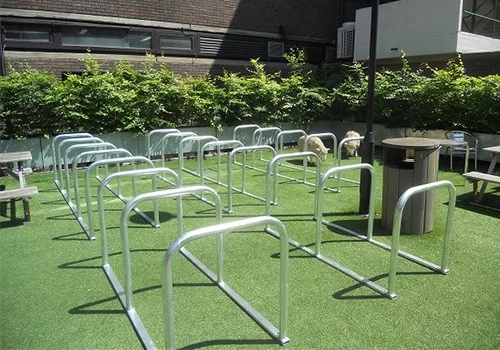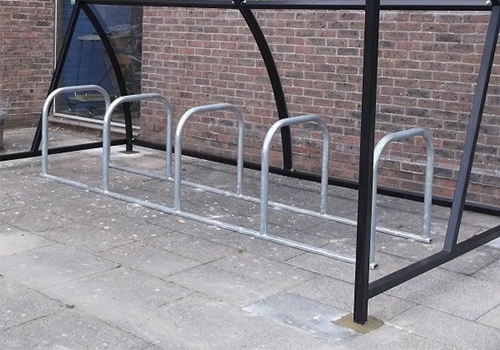Specifications
Model Number : PV-SC-001
Type: Bike parking and storage
Color:Yellow,Black,Green,Red,or Customized.
Style : both indoors and outside
Material : carbon steel
Loading: According to customer need
Size :195*23.2*75cm,200.55*23.2*75cm,or Customized.
Finish: hot-galvanized
Specifications
Model Number : PV-0081-01
Type: Bike parking and storage
Color:silver
Style : both indoors and outside
Material : carbon steel
Loading: According to customer need
Size :Height 1463mm, Depth 1114mm
Finish: hot-galvanized
Model Number : PV-0081-01
Type: Bike parking and storage
Color:Black
Style : both indoors and outside
Material : carbon steel
Loading: 2-10 bikes (According to customer need)
Size :Height 1463mm, Depth 1114mm
Finish: hot-galvanized
Model No.: PV-H1
Size: w605*D400*H330mm
Specification: Round tube:¢16*1.2mm
Finish: Power coated
Net Weight: 1.6 kgs
Packing size:6pcs/ctn
MOQ: 100pcs
Model Number : PV-0024-01
Material : carbon steel/stainless steel
Loading: according customer space size,we can design according the size
Size : W1977*D1130(depend on your parking space)*H2500mm
Finish: Powder coated ,hot-galvanized/electric polish
Packing size :2000*2000*2500mm(40 parking space )
Powder coated ,hot-galvanized/electric polish
Product number:PV-0046-01
Material:carbon steel
Specification:10.2*59*28CM or Customized.
MOQ:100PCS
Port:Shanghai
Trademark:PV
Model Number : PV-0081-01
Type: Outdoor Bike Parking Rack
Style : both indoors and outside
Material : carbon steel
Loading: 2-10 bikes (According to customer need)
Size :170.5*116*148CM
Finish: hot-galvanized
Model Number : PV-0055-01
Type: compact flat pack /slot
Color:black / silver /yellow/optional
Style :Outdoor/indoor
Material : carbon steel/ stainless steel
Capacity : park 6 bikes
Size : L1400*W1054*H840mm
Net weight :38KG
Finish: powder coating / hot galvanized /elctropolishing
Packing size :1490*860*160mm 1pcs/ctn
Product Name: Multi-Capacity Horizontal Two Tier Bike Parking Rack
Material: Carbon Steel
Finish: Powder coated
Post: 80mm * 80mm thickness: 3mm
Steel plate: thickness: 2mm
Dimension: 1325*1890*1830mm
Weight: 370 kg/set
Model: PV-0067-01
Material: stainless steel 304
Pipe: 50 mm* 2.5 mm
Size: 900*700 mm(L*W)
Surface treatment: polishing

As urban areas become more congested and environmental sustainability takes center stage, bicycles are playing an increasingly pivotal role in modern transportation systems. A key element that supports and promotes cycling is the availability of well-regulated, accessible, and secure bike parking. Urban planners, as stewards of city development, must understand the nuances of bike parking regulations to ensure their cities meet the needs of cyclists while achieving broader urban goals.This article delves into the critical aspects of bike parking regulations, offering urban planners insights into designing systems that encourage cycling, reduce congestion, and enhance sustainability.
Bike parking infrastructure plays a vital role in enabling active transportation modes such as cycling. Without adequate parking, even the best bike lanes and trails lose their appeal. Cyclists need secure and convenient places to park their bicycles at home, work, and public areas.
Efficient bike parking solutions encourage a shift away from car use, reducing traffic congestion in urban centers. Strategic placement of bike racks and shelters near transit hubs and commercial zones allows for seamless intermodal transport, minimizing the reliance on cars.
Many cities set ambitious goals for reducing carbon emissions, and promoting cycling is one of the most effective ways to achieve them. However, a lack of parking infrastructure can hinder these efforts. Well-regulated bike parking supports the wider adoption of cycling, contributing to reduced greenhouse gas emissions.
Urban planners must determine the appropriate number of bike parking spaces based on local demand and zoning requirements. Regulations often specify minimum parking standards for residential, commercial, and public areas.
Regulations should ensure that bike parking facilities are user-friendly and accessible to a diverse range of cyclists.
Bike theft is a significant deterrent to cycling. Urban planners should incorporate security guidelines into regulations, requiring facilities to include:
Outdoor bike parking should include weather protection measures such as shelters, canopies, or fully enclosed structures. This ensures the usability of facilities in all seasons and protects bicycles from wear and tear.
Urban planners must assess current and projected demand for bike parking. This involves analyzing cycling patterns, conducting surveys, and leveraging data on commuting trends.
Bike parking regulations should align with overall urban planning goals, including zoning laws, public transportation policies, and sustainability objectives. For example, mixed-use developments can incorporate bike parking as a requirement in building codes.
Regulations should consider the needs of diverse populations, including low-income communities, women, and older adults. Ensuring equitable access to bike parking facilities can help bridge transportation gaps and promote cycling for all.

The Netherlands leads the world in bike-friendly infrastructure. National regulations mandate bike parking in residential and commercial developments, with requirements for secure and weather-protected spaces. Cities like Amsterdam feature high-capacity parking garages and innovative solutions such as underwater bike storage.
In the U.S., bike parking regulations vary widely. Cities like Portland and San Francisco have implemented comprehensive guidelines, including specific rack designs and spacing requirements. Zoning laws often require commercial properties to provide a minimum number of bike parking spaces.
Japan’s densely populated cities have adopted vertical and automated bike parking systems to maximize space efficiency. Local regulations prioritize the integration of parking facilities with transit hubs to support multimodal commuting.
Densely populated urban areas often face space constraints, making it challenging to allocate land for bike parking. Vertical and modular storage solutions can address this issue, but they require upfront investment.
Many cities struggle to secure funding for bike parking infrastructure. Urban planners must explore public-private partnerships and grants to bridge financial gaps.
Even the best-designed facilities require regular maintenance. Regulations should include guidelines for routine inspections and repairs to ensure long-term usability.
The integration of IoT and smart technologies into bike parking is gaining traction. Features such as real-time occupancy monitoring, app-based reservations, and automated locking systems enhance user convenience.
Future regulations may incorporate sustainability metrics, such as the use of recycled materials in construction and renewable energy for lighting and surveillance.
As cycling patterns evolve, zoning laws must adapt to accommodate emerging needs, such as parking for e-bikes and scooters. Urban planners should consider flexible regulatory frameworks that can evolve with technology and societal trends.
Engage Stakeholders: Collaborate with cyclists, local businesses, and community organizations to understand needs and gain support for bike parking projects.
Pilot Projects: Test innovative solutions, such as automated parking systems, in small-scale projects before city-wide implementation.
Education and Awareness: Promote the benefits of bike parking through campaigns to encourage adoption and compliance with regulations.
Continuous Monitoring: Use data to evaluate the effectiveness of regulations and make adjustments as needed.
Bike parking regulations are a cornerstone of sustainable urban development. By providing secure, accessible, and well-designed facilities, cities can promote cycling as a viable and attractive mode of transportation. Urban planners play a critical role in shaping these regulations to meet the needs of modern cities while achieving environmental and social goals.With the right policies and innovative solutions, cities worldwide can create vibrant, bike-friendly environments that benefit residents and the planet alike.